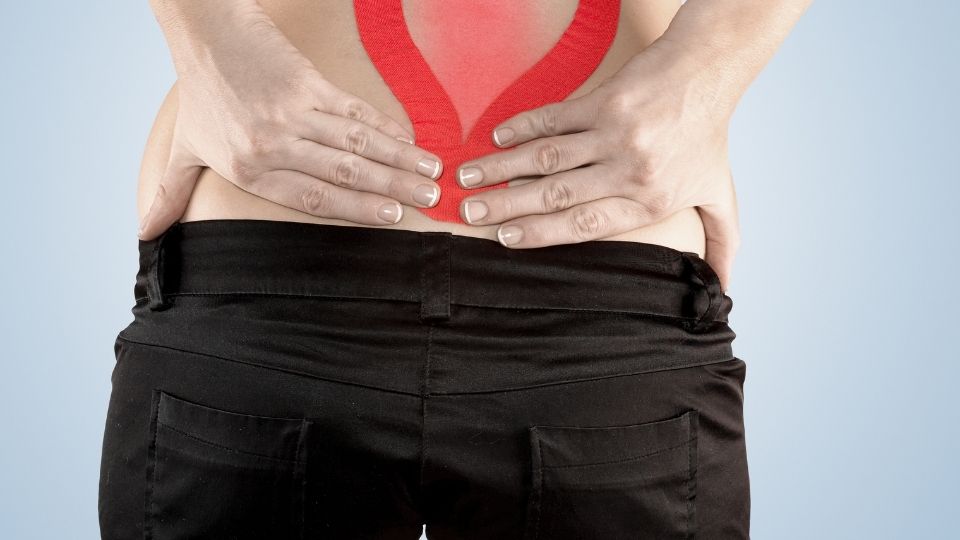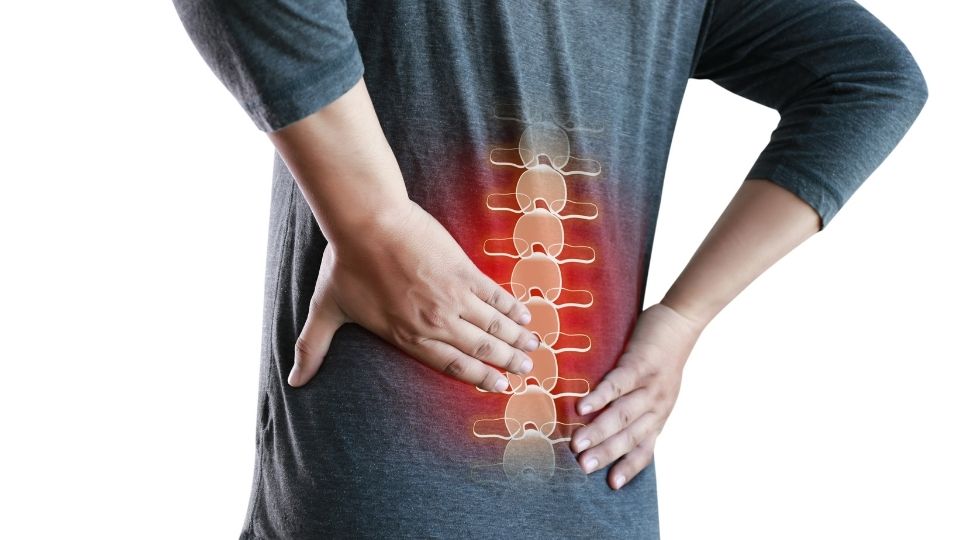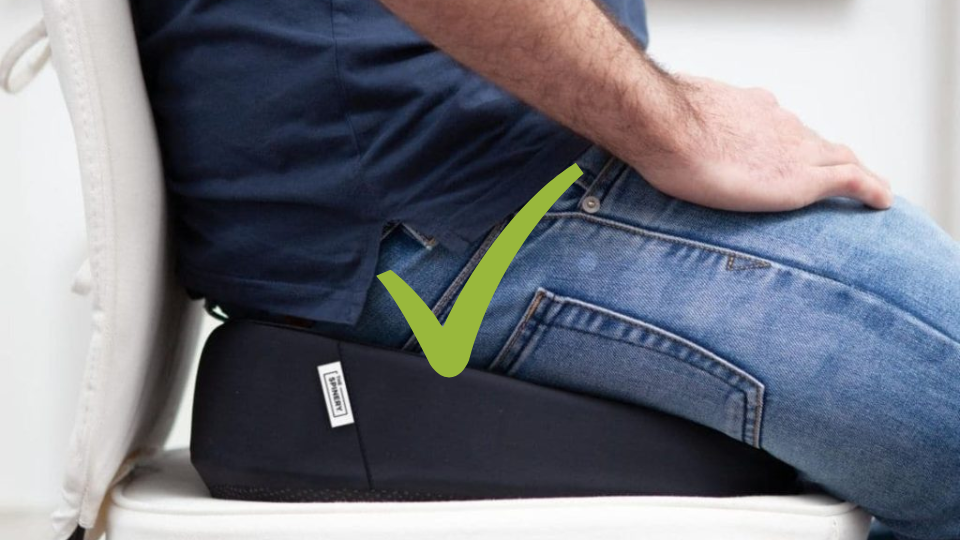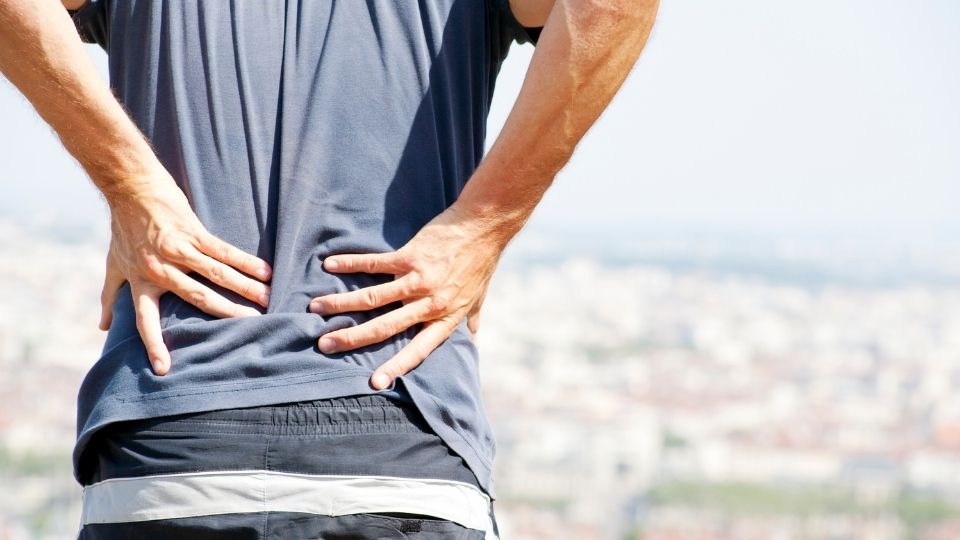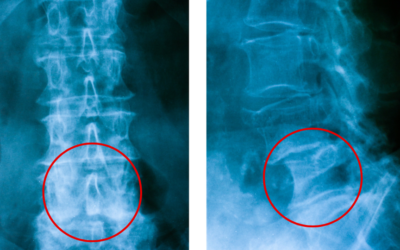Chiropractor’s Guide: Correct Way to Sit with Lumbar Spinal Stenosis
With spinal stenosis, you have spinal canal compression, which could hurt and even pinch nerve roots that pass through it, making sitting more challenging.* Sometimes, it will affect your lower back and neck, but it can also affect your entire spine!
The symptoms of spinal stenosis differ from person to person; some people may notice no symptoms, while others may experience back pain, sciatica, or tingling (like pins & needles) from head to toe. Unless someone has experienced it, it can be hard to describe how it truly feels. The condition sometimes feels like an electric shock for those with it.
As a general rule, with you sitting upright with both feet on the ground, your hips will be higher than your knees, so spinal stenosis doesn’t escalate. When you sit in this position, you release pressure from your spine, which can cause pain. Couches and soft chairs should not be used.
All Day Comfort & Support
The internet indeed contains a lot of reliable information, but it doesn’t cover everything, especially what is the best way to sit if you have spinal stenosis. My thirty years of experience as a chiropractor have allowed me to treat various patients with spinal stenosis. If you read this article, you’ll better understand spinal stenosis and how to sit to prevent pain and aches.
How Does Spinal Stenosis Happen?
Typically, spinal stenosis is caused by osteoarthritis or a gradual deterioration of the spine bones.* As a result, many people might not show symptoms for quite some time, although X-rays may reveal some changes if taken for another reason. If you have spinal stenosis, you might feel pain, numbness, or tingling in your neck, back, arms, legs, or hands, according to the severity and location of your condition.*
Black Friday: 35% Off Today
Typical Delivery 1-3 Days
Spinal stenosis occurs most commonly in people over the age of 50.* Other conditions such as scoliosis or injuries to the spine could also increase the risk of developing this disease for younger people born with narrow spinal canals!
The Following Back Conditions Can Also Result in Spinal Stenosis:
- Trauma to the spine
- A previous spinal surgery
- Inflammatory rheumatism
- Tumor of the spine
- Bone diseases
Symptoms of Spinal Stenosis
- Back pain
- Sciatica
- Leg numbness, cramping, or weakness
- The feet become numb
- Dropped foot
- Leg numbness
- Intense pain and weakness that spreads to one or both legs.
- Inability to sit comfortably
All Day Comfort & Support
Severe Cases Requiring Immediate Medical Attention Include:
How to Reduce Spinal Stenosis Pain When Sitting
You should consider the following recommendations(s) of the best position for sitting posture when dealing with spinal stenosis:
- Get up and move every 20 minutes as a preventative measure.
- Lumbar support may be recommended.
- Your feet should be flat on the ground.
- Maintain a hip height above your knees.
- If you increase your chair’s width, this may also work well. Ergonomic chairs are usually adjustable in depth. A person’s knees cannot be closer to the edge of the seat than three fingers.
- Symptoms can be soothed by alternating between sitting and standing.
Does Sitting Make Your Spinal Stenosis Condition Worse? Poor Posture – Spine
It is correct, no problem. In general, walking causes symptoms to be worse, but sitting or bending forward helps. Using the right chair can reduce back or sciatic pain drastically, as long as you move while sitting. I recommend regularly alternating between standing and sitting for healthy posture. Prolonged standing or sitting for long periods can result in cold muscles because prolonged standing and sitting can damage the body’s blood circulatory system.
Black Friday: 35% Off Today
Typical Delivery 1-3 Days
Is It Better to Walk or Sit With Spinal Stenosis?
Keeping your posture aligned when you are sitting and walking around is vital for those of us with spinal stenosis. Having good alignment reduces the pressure on our spinal cord, which means less pain!
Best Chair for Spinal Stenosis for Proper Position
The following minimum requirements for an ergonomic office chair may help prevent the pain associated with spinal stenosis:
- Height-adjustable seats. Occasionally, chairs may be unable to go low enough or high enough, and it may be necessary to replace the gas shock in your chair.
- Forward tilt capability. Chairs without this feature can be equipped with a seat wedge, which will help to keep your hips above your knees if the seat has a thick enough back.
- Ensure that you have a supportive seat. A general rule is that fewer pressure points exist on a large surface area. Two to three fingers should separate your seat edge from your knees.
Best Seat Cushion for Spinal Stenosis | Lumbar Spinal Stenosis
Properly set up chair cushions will allow you to sit upright all day. High-end seat cushions typically have a firm natural latex base and a softer top layer. It is important to have a non-slip cover and base to maintain proper posture for a long time. Additionally, high-end seat cushions may help to distribute pressure away from sensitive areas on the buttocks, hips, tailbone, and thighs.
What Should I Avoid with Spinal Stenosis?
No Running or Long Walks
Walking too long or running could make things worse than before by causing repeated trauma that makes less space between bones allowing them to grind together, leading to inflammation and tissue damage where nerves exit onto muscles irritating them over time until all movement becomes painful. It is a generally good idea to take short walks with intermittent breaks to avoid inflammation.
Exercises to Be Avoided with Spinal Stenosis
When it comes to strengthening the muscles of your lower back, isometric exercises are a better idea than flexion or extension. Isometrics involves sitting in an upright position and contracting against something like a weight that you then push away from yourself so as not to move backwards. To avoid injuring your spine even more with these movements, keep good posture when doing each exercise by keeping both shoulders down-sloped towards one another while breathing normally throughout! *
When stretching your back, it can be challenging to know where the line is between a stretch that helps and one that hurts. It’s crucial you don’t force yourself into an uncomfortable position or put too much pressure on your spine, especially anything requiring you to bend over backwards excessively; this may make any existing inflammation worse as well as lead to more pain in other areas of the body like numbness from nerve impingement.
Sit Less with Spinal Stenosis
Sitting too often can make your muscles weaker and lead to back pain. It also increases inflammation for you as well! If it means just a few minutes more of work, why not get up every once in a while? You’ll feel better with less pain over time by staying active. The benefits of staying active are worth the extra effort if only taking a few moments out of our day will do that much good.
Takeaway
Long periods of sitting can worsen the effects of spinal stenosis. If you are experiencing chronic back pain, numbness, or tingling in your arms and legs, it may be a sign that you have this condition. To get relief from these symptoms, consult an ergonomic specialist who understands how to sit comfortably for those with spinal stenosis.
See a Healthcare Provider
You should consult your provider if you experience any symptoms of spinal stenosis. The following symptoms need immediate attention: Difficulty walking or a lack of balance. Numbness and weakness in your limbs are getting worse.
Sources:
- Lurie, J. and Tomkins-Lane, C., 2016. Management of lumbar spinal stenosis. Bmj, 352.
- Katz, J.N. and Harris, M.B., 2008. Lumbar spinal stenosis. New England Journal of Medicine, 358(8), pp.818-825.
- Kalichman, L., Cole, R., Kim, D.H., Li, L., Suri, P., Guermazi, A. and Hunter, D.J., 2009. Spinal stenosis prevalence and association with symptoms: the Framingham Study. The Spine Journal, 9(7), pp.545-550.
- Jensen, R.K., Jensen, T.S., Koes, B. and Hartvigsen, J., 2020. Prevalence of lumbar spinal stenosis in general and clinical populations: a systematic review and meta-analysis. European spine journal, 29(9), pp.2143-2163.
- Whitman, J.M., Flynn, T.W., Childs, J.D., Wainner, R.S., Gill, H.E., Ryder, M.G., Garber, M.B., Bennett, A.C. and Fritz, J.M., 2006. A comparison between two physical therapy treatment programs for patients with lumbar spinal stenosis: a randomized clinical trial.



